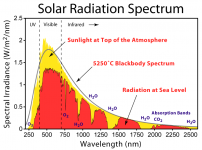desert fox
Member
Tagging along. They are getting pretty impressive. I would like to see better CRI. I cant have my neighbors think I am getting abducted by aliens if I carelessly leave the tent and door open. I suppose I could rig up a trigger switch to turn off the light and have a some whites. I just find I catch plant issues and deficiency so much quicker with CMH. I only run when its cold. will be running t-5s for flowering next summer, and keeping things vegging with normal outputs t-8.
I think I will get one in the next 5 years.
I think I will get one in the next 5 years.



